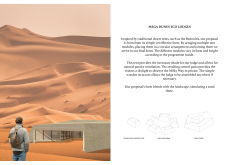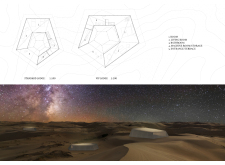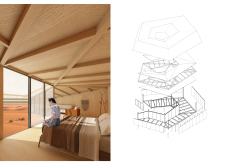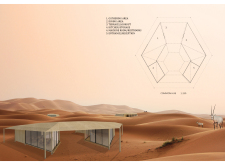5 key facts about this project
Modular Design and Environmental Integration
The architecture features a series of tent-like structures designed to resemble the natural flow of sand dunes. This modular design allows for flexibility in layout and function, enabling different accommodation options ranging from standard lodges to more spacious VIP units. The circular arrangement fosters a sense of community, encouraging social interactions among guests. By utilizing a low-profile design, the lodges blend with the landscape, minimizing visual disruption.
The project incorporates lightweight materials such as wood, canvas, and glass. The use of canvas mirrors traditional structures while maximizing the benefits of natural ventilation, essential in a desert climate. The large glass panels enhance the connection to the environment, allowing for abundant natural light and views of the surrounding dunes.
Design Elements and Spatial Configuration
Each lodge consists of essential spaces, including a bedroom, living area, bathroom, and an entrance or terrace. The layout is designed for comfort and functionality. The common hub serves as a gathering space, equipped with dining areas and shared amenities. This focal point promotes communal living and a shared experience, central to the project’s mission.
Unique to the design is the emphasis on passive environmental strategies. Skylights in central patios provide opportunities for stargazing while facilitating natural airflow, which contributes to energy efficiency. The cross-ventilation design helps maintain comfortable temperatures, reducing reliance on mechanical cooling systems.
Overall, the "Mega Dunes Eco Lodges" project represents a focused effort to harmonize architecture with its surroundings while providing a unique lodging experience. Its thoughtful approach to design, materiality, and community-focused spaces position it as a noteworthy example within the field of desert architecture. For further details about the project's architectural plans, sections, and design concepts, readers are encouraged to explore the comprehensive presentation of this project.


























